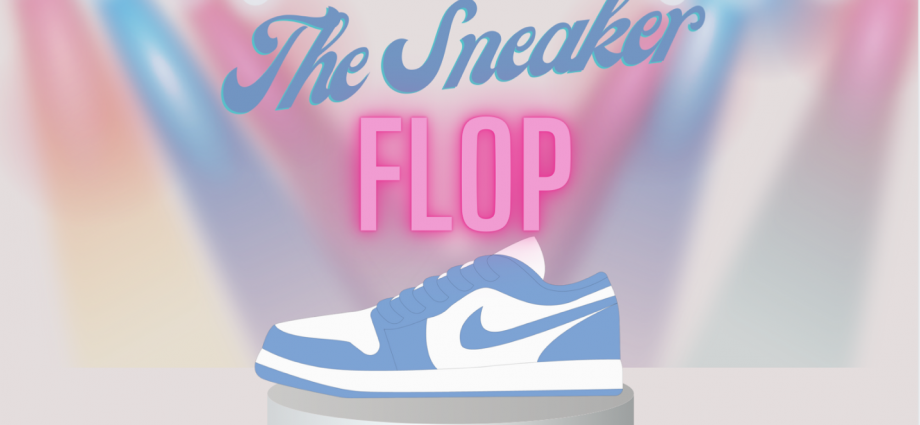Author: Mauricio Chandler, Graphics: Acasia Giannakouros
The BRB Bottomline:
While sneaker flipping proved to be a reliable side hustle throughout the later half of the 2010s, recent developments have resulted in shrinking profit margins for established sneaker hustlers and have thereby discouraged market entry for new entrepreneurs.
Over the last decade, sneaker reselling has evolved from a lucrative side hustle led by a movement of hobbyists to a massive industry generating millions or even billions of dollars of profit per year. Fueled by hype culture and powerful trends in streetwear fashion, sneaker reselling, also known as “sneaker flipping,” is flourishing as a way to earn substantial profits through relatively simple means.
The rise of sneaker reselling can be traced back to the early 2010s when popular sneaker brands such as Nike and Adidas began to release new shoe models in limited quantities, causing those models to become increasingly sought after. Familiar silhouettes, including Air Jordan 1s and Nike Foamposites, became exclusive commodities, and young entrepreneurs saw an opportunity to profit off of excess demand. By acquiring popular sneakers at retail price and then selling those shoes at a higher value, sneaker resellers—sometimes referred to as sneakerheads—began to see large profit margins.
Market Trepidation
Sneaker reselling has long been regarded as a profitable business that anyone could become involved with. Supported by reselling platforms such as StockX and GOAT, anyone with access to the Internet could resell sneakers and earn a significant profit. However, within the last year, profit margins for sneaker resellers have decreased across the board, a trend that has negatively affected the sneaker community and ultimately pushed away prospective sneakerheads from entering the resell game. While internet scams and the deterioration of large e-markets such as eBay have played a role in the downturn of the sneaker economy, these decreasing profit margins can be largely attributed to increasing business costs and the devaluation of classic silhouettes.
Interesting Costs
In the early years of the sneaker flipping movement, the costs of entering the resale market were minimal; all a potential reseller needed was a couple of dollars, Internet connection, and an entrepreneurial spirit. However, entering the resale industry today is completely different and could very likely result in negative returns. One significant cost in today’s sneaker reselling environment is what is now the necessity of sneaker buying bots. New shoe releases are sold on a first-come, first-serve basis on sneaker manufacturer’s websites. In order to effectively flip a shoe, sneakerheads must race to website queues and wait hours for an opportunity to buy their desired pair. In today’s highly competitive reselling environment, the only viable way to secure sneakers is through bots that automatically buy shoes at high speeds directly from website queues. While effective, bots can cost up to ten thousand dollars. For well-established sneaker resellers, the added cost of bots has greatly reduced profit margins. For sneakerheads looking to enter the resale industry, costs have both outpaced potential profit from resales and prevented the possibility of entry without significant financial investment.
Hype Burnout?
Another factor contributing to shrinking profit margins has been the devaluation of what once were highly sought-after, expensive shoes such as the Yeezy 350 V2 and Nike SB Dunk. Both of these models would consistently resell for around $350 per unit in the first half of 2021, but in 2022 these models are reselling for almost $100 less. StockX market data indicates that buyers were purchasing shoes at more than 40% higher than the retail price in 2021, a margin which has fell to 24% since then.
The sneaker flipping wave of the mid to late 2010s was an exciting time period that provided many young entrepreneurs with the opportunity to gain a respectable income working within a culture they loved. While dedicated sneakerheads continue to hold on to the reselling craft, added business costs and the devaluation of classic models have caused many prospective resellers to walk away.
Take-Home Points
- Fueled by trends in streetwear fashion, the sneaker flipping industry was born through young entrepreneurs profiting off of excess sneaker demand in the early 2010s.
- Developments in the sneaker reselling industry have driven down profit margins for many established sneakerheads and discouraged market entry for newer sneaker entrepreneurs.
- Increasing costs, especially those related to sneaker buying bots, have contributed to shrinking profits.
- The devaluation of classic sneaker silhouettes has also contributed to market trepidations.
- While sneaker reselling is not dead, new market conditions have prevented the possibility of easy entry and have thus shaken up the industry and changed it drastically from the small, passionately run community it once was.

